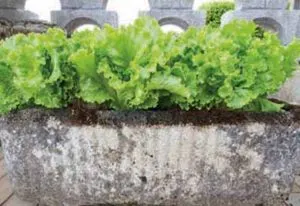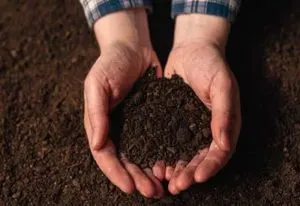When it comes to raising your own food, nothing can be more simple than growing loose leaf lettuce! Not only is it simple to grow, it can keep fresh salads on the dinner table from early spring to late fall. In fact, with a cold frame, it can even grow through the harshest of winter months as well.
There are four basic styles of lettuce. Crisphead (Iceberg), Butterhead (Bibb), Romaine, and the star for today’s article, Loose Leaf Lettuce.
Although all 4 categories are tasty selections to raise, growing loose leaf lettuce is by far the most simple of all. It can be grown almost anywhere, from a traditional garden setting, to raised rows, raised beds, containers, and even in hanging baskets and patio planters.
Once seeded, it is a fast path from sprout to harvest. Many loose leaf varieties can be harvested in as little as 30 days after planting. And with second and third cutting, they can keep a household in a steady supply of salads. A good rule of thumb is to sow a new area just before it’s time to harvest the first cutting of a crop. This way, you always have a supply of fresh greens coming on as the first crop begins to fade from the third cutting.
Growing Loose Leaf Lettuce
Soil Prep
When it comes to growing loose leaf lettuce, the more fertile and fine the soil, the better. Seeds for loose leaf styles are extremely small, and the loose soil allows seed to germinate easily. Add in large amounts of compost and even a bit of sand to your planting area to help build in fertility and good drainage.
If planting in containers, be sure to allow for good drainage. Pine or rough course hardwood bark mulch is an excellent lightweight choice to put in the bottom of containers to allow for excellent drainage.
Planting
Sow seeds every few weeks to keep an everlasting crop coming on all year. Loose leaf lettuce prefers cool weather. The hot summer heat tends to wilt and bolt lettuce. As the summer heat turns up, plant in an area of the garden or patio that receives more shade. The hot summer sun and temperatures can be hard on lettuce crops, and cause them to bolt.
Once fall begins to arrive, you can begin to sow seeds back in the sunny locations. If you are planting in pots or containers, this process is a breeze. Just move around containers as needed throughout the season to protect from too much heat and sun.
With leaf lettuce, sowing seed is a simple process. Plant seeds to a depth of 1/4″ to 1/2″ and cover. For best results, apply a 1/8″ to a 1/4″ of compost directly on top after planting. The compost will act as both a mulch and a source of fertilizer as the lettuce starts to grow. See : How To Make Great Compost
Harvesting
Leaf lettuce can be harvested when plants reach 2 to 4″ high. Snip leaves about 1/2″ above the soil line at each harvest with a sharp pair of scissors or shears. The sharp part is a key, a good, clean cut allows the crop to regrow quickly from less stress.
The harvested lettuce will become a little less tender with each cutting. Usually by the third harvest, it’s time to pull out the plants, add them to your compost bin, and start again.
There are hundreds of varieties to grow, but here are some excellent, full-flavored selections to try!
Great Selections For Growing Loose Leaf Lettuce:
Black Seeded Simpson : A crisp, leaf lettuce that handles heat well
Prize Head Leaf – Heirloom Variety with great flavor
Red Salad Bowl : Beautiful red-leafed lettuce that adds a ton of flavor and color to salads
Send us your tip!
Do you have a garden tip you would like to share? Or perhaps a few photos and a short story on your own garden?
Email us today at info@thisismygarden.com and share it with our TIMG community. You can also use the “Feature My Garden Tip” button at the top of the website to submit your entry. This article may contain affiliate links.


